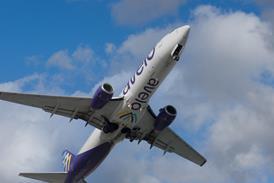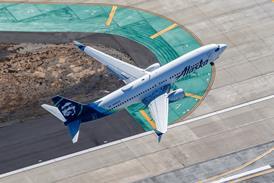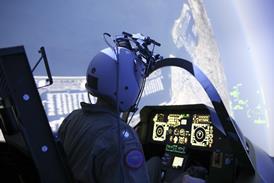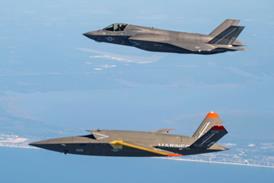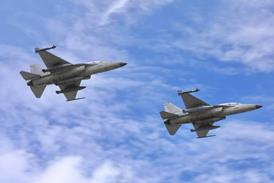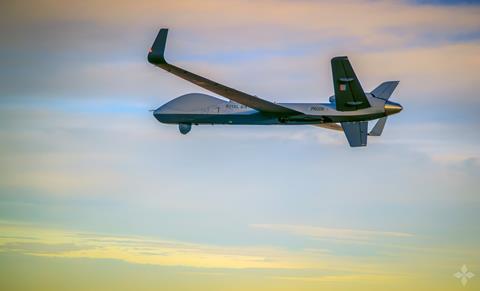
When instability reigns, information is everything.
Europe faces challenges on many fronts. From the ongoing war in Ukraine to mass migration and shifting geopolitical dynamics, it’s clear that the nations of Europe face collective challenges best tackled through collective action. The need to address critical shortfalls in intelligence, surveillance, and reconnaissance (ISR) capabilities is no exception.
Deterring further conflict starts with ISR, and Europe’s leaders have made clear that uncrewed surveillance capabilities are needed in the High North, in the Mediterranean, and on NATO’s Eastern Front.
There is good news: The MQ-9B SkyGuardian® and SeaGuardian®, built by General Atomics Aeronautical Systems, Inc. (GA-ASI), are emerging as the gold standard in Europe for the ISR mission. Belgium, Poland, and the United Kingdom have all acquired the multi-mission platform, and demand is building in nearly every other region around the world.
The aircraft provides not just unmatched endurance in its class — more than 30 hours in some configurations — but also a slew of additional capabilities.
Spanning everything from anti-submarine and anti-surface warfare to strike and signals intelligence, the MQ-9B is the Swiss Army Knife of uncrewed aerial systems (UAS). Its range of missions and growing numbers in Europe offer opportunities for closer military-to-military cooperation between NATO partners and reduced operating costs driven by greater commonality on the Continent.
SkyGuardian and its maritime counterpart, SeaGuardian, are engineered from nose to tail to integrate seamlessly with NATO networks and warfighting systems and are the first UAS able to operate in congested sovereign civilian airspace without special accommodations.
In May, GA-ASI announced that the U.K.’s Military Aviation Authority had issued a Military Type Certificate to the MQ-9B, certifying that it had passed a rigorous airworthiness assessment and verifying its ability to safely operate without geographic restrictions, including over populous areas. It’s a first-of-its-kind milestone for a large unmanned aircraft system and has opened the door for MQ-9B to clear other such restrictions across Europe.
The Quadratix revolution
SkyGuardian and SeaGuardian also come with industry-leading ground control systems powered by General Atomics’ advanced software environment, Quadratix, which synthesizes sensor data into a clear operational picture to provide operators with actionable intelligence and an intuitive user experience.
Quadratix brings to bear GA-ASI’s full suite of advanced software products, capabilities, and people — unleashing the latest in advanced computing technology, including autonomy, artificial intelligence, and machine learning.
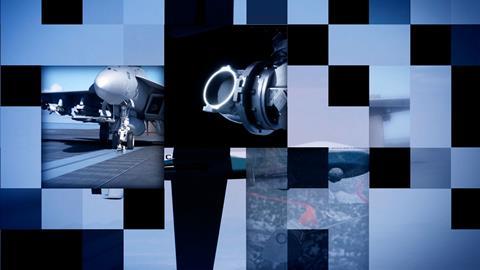
For MQ-9B, Quadratix synthesizes inputs from multiple sensors into a unified operational picture. In practice, this means that instead of each payload requiring its own specialist operator, a single SeaGuardian/SkyGuardian operator can manage an entire ISR sensor suite.
The net effect of these changes is that users will get a better total picture and a streamlined experience between flight and sensor operations, creating a better and more effective system with a reduced training burden and smaller crew sizes.
Quadratix also empowers MQ-9B to take advantage of the latest advancements in command and control. Exquisite sensor data can create hefty bandwidth requirements, which can overwhelm more limited low Earth orbit satellite connections that provide global internet coverage. Quadratix solves that problem by rightsizing the data so it can be easily transported via a secure commercial satellite connection.
Because of its unmatched endurance and ever-expanding capability, it’s clear why MQ-9B has emerged as the obvious choice for responsible powers around the globe.
SkyGuardian and SeaGuardian widen the aperture of what is possible with uncrewed systems.
Watch a video here.

